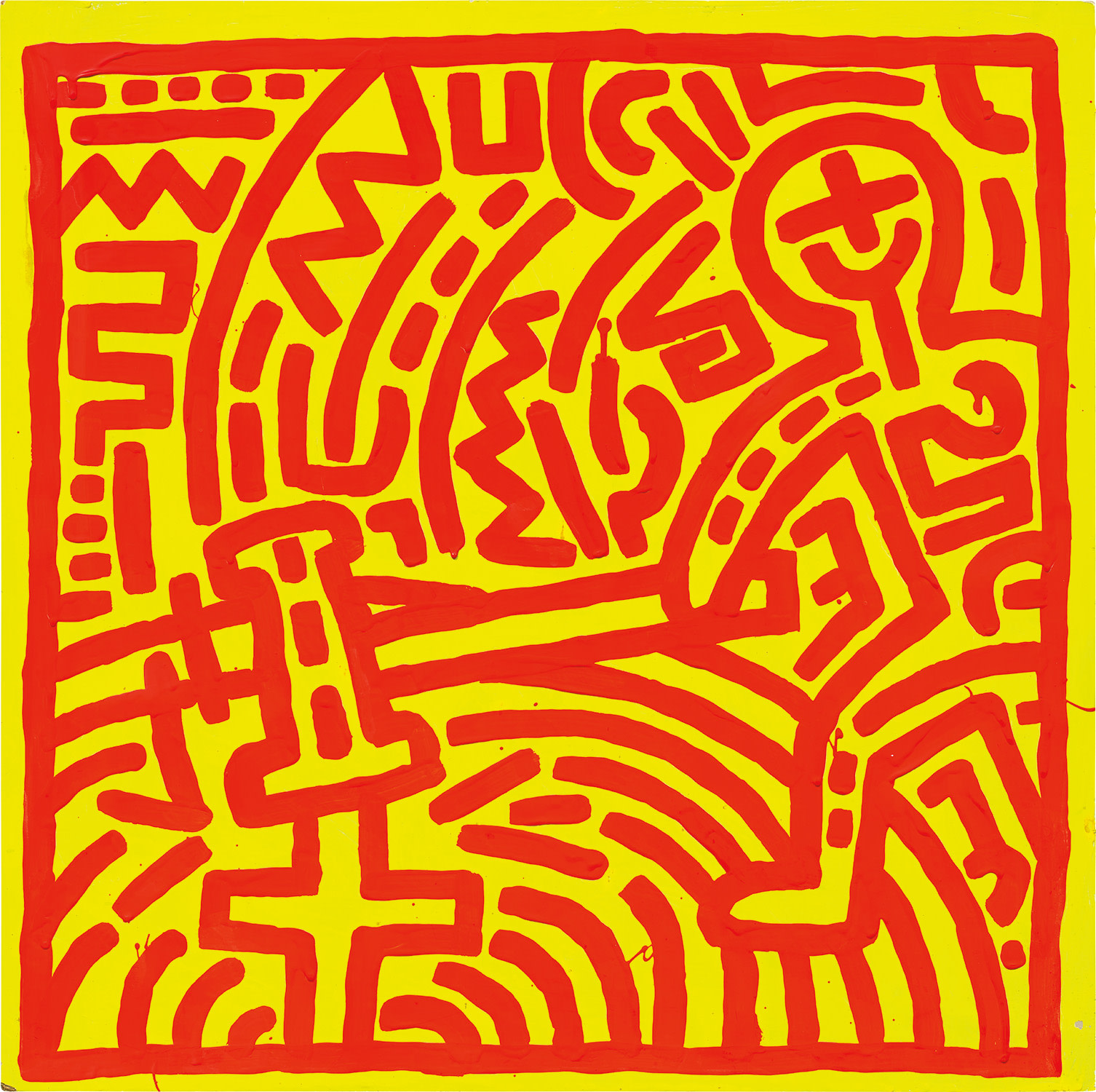

Property of a Private New York Collector
24Ο◆
Keith Haring
Untitled (For John Sex)
signed, dedicated and dated "FOR JOHN SEX K. Haring JAN. 24, 1982 ⨁" on the reverse
acrylic and Day-Glo on wood
23 1/4 x 23 1/4 in. (59.1 x 59.1 cm)
Executed in 1982.
Further Details
Full-Cataloguing
Keith Haring
American | B. 1958 D. 1990Haring's art and life typified youthful exuberance and fearlessness. While seemingly playful and transparent, Haring dealt with weighty subjects such as death, sex and war, enabling subtle and multiple interpretations.
Throughout his tragically brief career, Haring refined a visual language of symbols, which he called icons, the origins of which began with his trademark linear style scrawled in white chalk on the black unused advertising spaces in subway stations. Haring developed and disseminated these icons far and wide, in his vibrant and dynamic style, from public murals and paintings to t-shirts and Swatch watches. His art bridged high and low, erasing the distinctions between rarefied art, political activism and popular culture.